[ad_1]
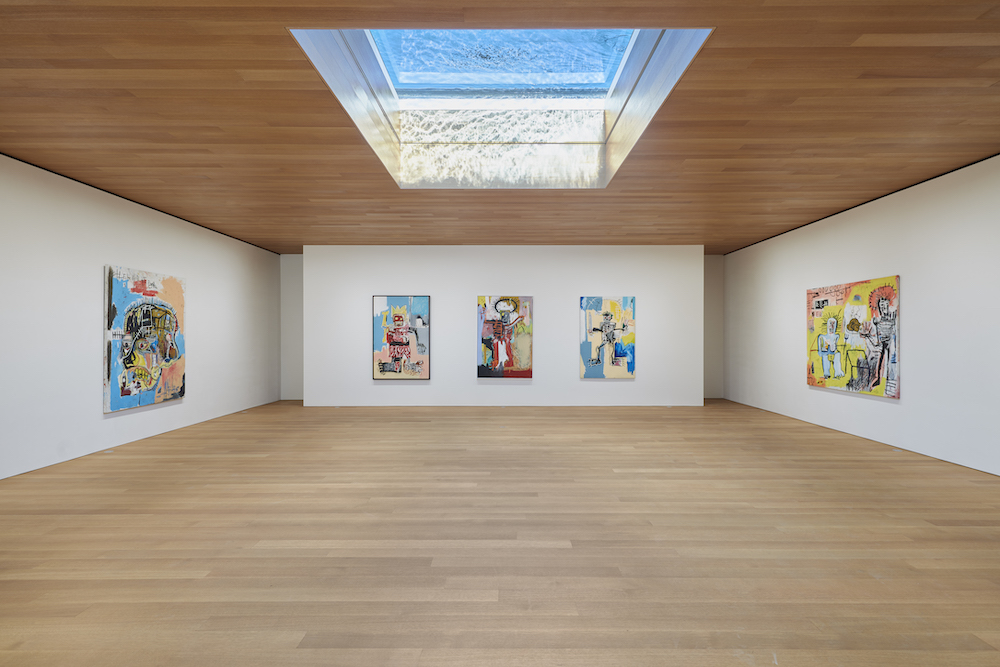
Installation view of “Jean-Michel Basquiat” at the Brant Foundation in New York, which runs through May 15.
TOM POWEL IMAGING/© ESTATE OF JEAN-MICHEL BASQUIAT/COURTESY THE BRANT FOUNDATION/LICENSED BY ARTSTAR, NEW YORK
AS OUR GILDED AGE CONTINUES APACE, some of New York’s wealthiest are starting the year by unveiling their new art palaces.
Earlier this month, J. Tomilson Hill opened a sleek two-floor home for his Hill Art Foundation in a West Chelsea condo building designed by Peter Marino. The inaugural show in the 6,400-square-foot space sports Christopher Wool paintings from the former Blackstone vice chairman’s collection as well as works loaned by the artist.
On March 15, Stephen M. Ross, the chairman of Related Companies, will cut the ribbon on a 15-story Thomas Heatherwick sculpture (formerly known as Vessel) that acts as the absurd, banal centerpiece of Hudson Yards, his $25 billion playground for the rich. A glimmering cage of 154 staircases, it has required an astonishing $200 million to build.
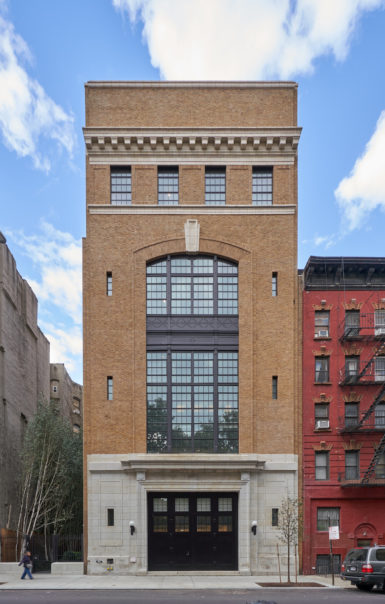
The exterior of the Brant Foundation in New York, a Con Edison building that artist Walter De Maria used as his home and studio from the mid-1980s until his death in 2013. Richard Gluckman handled renovations.
SEAN KEENAN/COURTESY THE BRANT FOUNDATION
And next week, businessman Peter Brant and his family will open the East Village branch of their Brant Foundation in a 100-year-old Con Edison building that the late artist Walter De Maria used as his home and studio for a quarter-century. First up in those handsomely renovated environs is a show of some 70 works by Jean-Michel Basquiat, the storied, relentlessly inventive painter who died of a drug overdose at age 27 in 1988, about five blocks from the site. Earlier this week I walked through the exhibition, and it is positively thrilling, guaranteed to be a blockbuster highlight of the year.
The East Village has changed a lot since it was Basquiat’s stomping grounds. Pricy buildings have been sprouting in the area for years, and rents have climbed, displacing some longtime residents. The artist’s former address now hosts a members-only Japanese restaurant called Bohemian. And here comes the Brant Foundation, which has 16,000 square feet over four floors, 7,000 of which are for exhibitions. Its roof—topping out just above most of its neighbors—provides the most breathtaking views of the area I have ever seen. The garden up there has a shallow water pool with a clear bottom that streams light into a gallery below. The renovation was done by Richard Gluckman, who also handled the Brant Foundation Art Study Center in Greenwich, Connecticut, and he has polished the once-raw space. Brant scooped up the building for $27 million, and it has come quite a long way since 2014, when Dan Colen staged a truly horrendous show in its pre-rehab state.
What would Basquiat have made of all this? One can only speculate. But there is no question that this exhibition presents his work in impressive fashion. There are about 70 paintings and drawings by the once-in-a-generation artist that date from between 1980 and 1987, including a handful of masterpieces. Loans have come from the Whitney Museum, the Brants and their foundation, as well as fellow travelers like Eli and Edythe Broad, Yusaku Maezawa (whose $110.5 million skull is on hand), François Pinault, and other unnamed collectors.
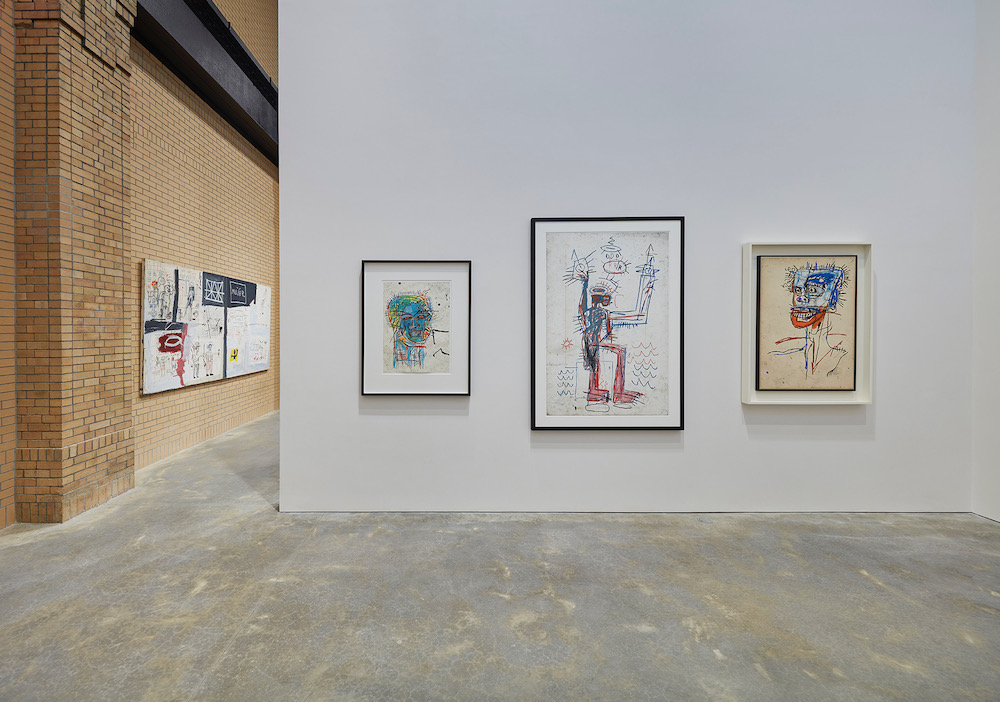
Installation view of “Jean-Michel Basquiat” at the Brant Foundation in New York.
TOM POWEL IMAGING/© ESTATE OF JEAN-MICHEL BASQUIAT/COURTESY THE BRANT FOUNDATION/LICENSED BY ARTSTAR, NEW YORK
And it is all judiciously hung, with thoughtful pairings and some moments of real drama, like a soaring wall with 16 works from 1982, Basquiat’s year of miracles. (Brant—who, full disclosure, owned the parent company of this magazine until late last year—and Dieter Buchhart, an expert on the artist, curated the show, which ran at the Fondation Louis Vuitton in Paris last year in an expanded form.)
That is not to say that viewing the exhibition is an entirely comfortable experience. If we’re being honest, there is a kind of perverse joy, a disturbing friction, to be experienced in seeing how the aseptic one-percent-of-the-one-percent surroundings clash with the glorious, manic energy of Basquiat’s work, as well as its insistent, clear-eyed references to political issues and real-world problems—commitments that can get lost amid the flow of headlines about record prices achieved at auction for these canvases.
Look closely and you can see, scrawled onto canvas and paper, plywood, and even a full door ripped from its hinges, amid the artist’s inimitable boxers, warriors, and other figures, phrases like “HOOVERVILLE,” “PRICELESS ART,” “DEBT/PAID DUE,” “COWARDS WILL GIVE TO GET RID OF YOU,” and “TAX FREE.” That last one has a particular piquancy when seen inside the type of nonprofit institution that can in some cases accrue tax benefits for funders.
Indeed, the Brant and Hill foundations are just two of the many private institutions that monied collectors have established across the U.S. of late, joining the likes of the Broad and the Marciano Art Foundation in Los Angeles, Glenstone in Potomac, Maryland, and the Rubell Family Foundation in Miami. Such projects—which have operated with various levels of accessibility—serve as big-budget exemplars of the independent-minded approach to philanthropy that has become increasingly visible among members of today’s elite, who create their own organizations instead of donating solely to established ones. (It should be noted that Brant, Hill, and many of their compatriots have also been heavily involved with the boards of many other more traditional museums.)
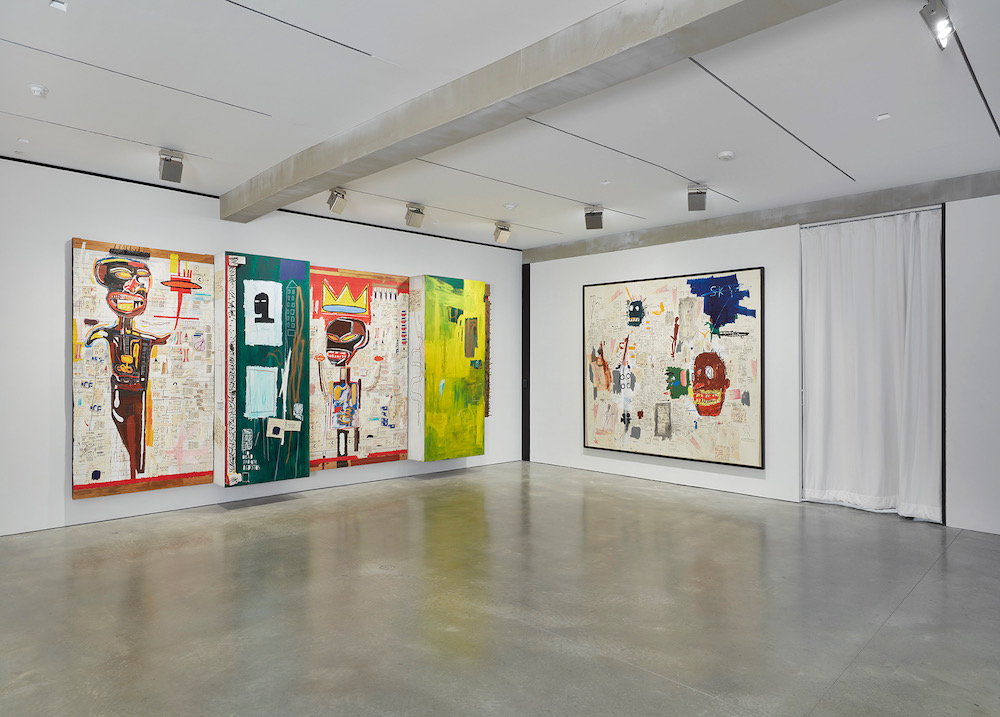
Installation view of “Jean-Michel Basquiat” at the Brant Foundation in New York, which runs through May 15.
TOM POWEL IMAGING/© ESTATE OF JEAN-MICHEL BASQUIAT/COURTESY THE BRANT FOUNDATION/LICENSED BY ARTSTAR, NEW YORK
One risks sounding churlish when expressing skepticism about such largesse. According to one strain of logic, having more places to view art is automatically a good thing. Better the wealthy spend their excess cash on museum space than yachts or doomsday bunkers in New Zealand. And a Basquiat show—especially one as potent as this—is admittedly an irresistible offering. Admission, which can be booked online, is free. (March tickets are already gone.) Who knows how many new Basquiat fans will be christened as a result?
The problem is that, however well-intentioned, such private efforts provide their pleasures while declining to address some of the serious, existing inequalities in the cultural realm that more considered philanthropy (to say nothing of government policy) could remedy. Most art museums in the U.S., it should be remembered, could not even dream of putting together a Basquiat survey, given the cost of facilitating loans and insurance. (And the artist’s work remains woefully underrepresented in museums, which largely can no longer afford to buy it.) But thanks to one passionate collector, New York will have a major one through May 15. It’s exciting to note that a promising-sounding show on the artist is scheduled to come to the Guggenheim the month after.
Meanwhile, other arts institutions will make do. Even in this flush city, arts groups manage to do vital work on humble budgets that a bit more funding could transform in profound ways.
There’s Recess, for example, which runs spaces in Brooklyn and an arts program for court-involved minors. There are the alternative spaces like White Columns, Artists Space, and the like, that at their best provide the first exhibiting opportunities for future stars and underrated talents. And there’s the perennially underfunded El Museo del Barrio, which serves as an essential repository for Latinx and Latin American art. The huge sums of money put toward any number of private institutions could radically expand on-the-ground work that is already serving a diverse array of audiences.
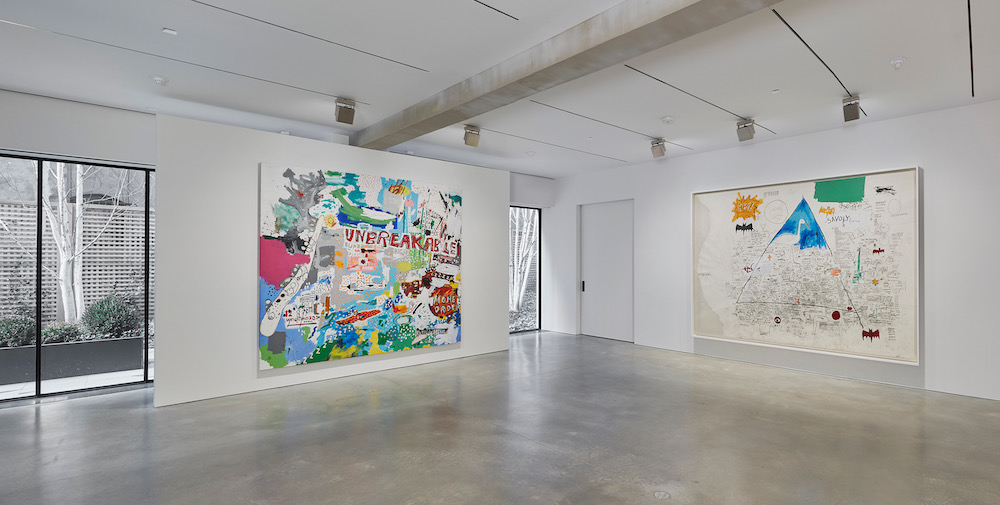
Installation view of “Jean-Michel Basquiat” at the Brant Foundation in New York, which runs through May 15.
TOM POWEL IMAGING/© ESTATE OF JEAN-MICHEL BASQUIAT/COURTESY THE BRANT FOUNDATION/LICENSED BY ARTSTAR, NEW YORK
A formidable new arts space opening in the East Village is cause for celebration. But what happens after the Basquiat show comes down? If the foundation becomes a repository for blue-chip art and big names, for showing off trophies acquired over a lifetime of collecting, that would be a painful development for the cultural life of this city. New York already has plenty of spaces to see such things. Instead, my hope—as I wrote back in 2014—is that the Brant Foundation and its brethren will be willing to experiment, and to partner with other local organizations, serving as a forum for art and artists and ideas that have not been welcomed elsewhere.
Such a mission would address, with refreshing humility, this fraught moment, in which many of the city’s cultural institutions still speak to just a sliver of their potential public. It’s a moment when homelessness is on the rise and one in ten public-school students live in temporary housing at some point during the year at the same time that a Museum of Modern Art board member can plunk down $238 million for a penthouse. A tax giveaway to Amazon has been rebuffed, and politicians and citizens are asking incisive questions about how a polity should function and whom it should serve—how competing influences and viewpoints can be reconciled.
The magic of Basquiat is that his ingenious art embodies precisely those issues. With candor and quick thinking, it brings together countless disparate elements—free-flowing passages of abstraction, rough cartoon imagery, and dense bits of text, to capture the exhilarating, topsy-turvy, sometimes heartbreaking nature of life in New York City. His 1982 painting The Price of Gasoline in the Third World, for instance, includes two men with halos holding weapons, outlines of windows and houses, blazing passages of light blue and blood red, and texts as disjunctive as “CLITORIS” and “TO YOUR RIGHT, LOW INCOME HOUSING.” As is often the case with Basquiat, the result is not seamless or pristine in any traditional sense. It’s provisional, obviously pieced together, but it works, and it is beautiful.
This may very well sound corny, but I will admit that, as I strolled through the Brant Foundation’s luxurious new home, one recurring phrase on some of Basquiat’s works kept catching my eye, to moving effect: “E PLURIBUS.” Out of many. The artist sometimes left out or obscured the final word in that motto—“UNUM”—on his canvases. Perhaps he was challenging us to provide it.
[ad_2]
Source link

